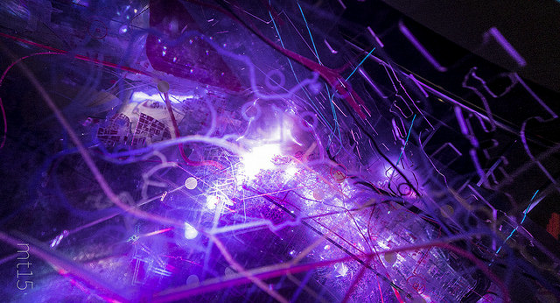As an "artificial neuron" that imitates the human brain so that computers can process at speeds higher than humans

byDigitalRalph
Processor with the same structure as the human brainMany researchers are trying to develop higher throughput and higher energy efficiency by developing a new type of power source. In Science Advances dated January 26, 2018, with respect to "artificial neuron" which is one such attempt, artificial synapses can be ignited more than 1 billion times per second, and the necessary energy is 10,000 minutes of the organic synapse 1 system has been announced.
Ultralow power artificial synapses using nanotextured magnetic Josephson junctions | Science Advances
http://advances.sciencemag.org/content/4/1/e1701329
Artificial neurons compute faster than the human brain
https://www.nature.com/articles/d41586-018-01290-0
NIST's superconducting synapse may be missing piece for 'artificial brains' | EurekAlert! Science News
https://www.eurekalert.org/pub_releases/2018-01/nios-nss011818.php

The software of Artificial Intelligence (AI) that imitates the human brain, as used in Google's automatic image classification and language learning program, made great progress in the computer. However, these software is not suitable for existing hardware, as it requires a lot more power than human tasks do.
National Institute of Standards and Technology(NIST) is one of the institutions emphasizing the development of neuromorphic hardware that can move software of a mechanism like a human brain more efficiently. Although existing hardware transistors handle 1 or 0 precise information at regular intervals, NIST's "neuro-morphological" hardware produces different types of signals like human neurons, when necessary Depending on the ignition, we will accumulate small information from multiple sources. According to this mechanism, software can be run with less energy.
However, the gap (SynapseWhen you need to send information between transistors that have a large number of transistors, the efficiency of conduction will be poor. Therefore, the research team can transmit electricity with zero resistanceniobiumMadeSuperconductorTo create electrodes similar to neurons and to fill the gap between superconductors with thousands of magnetic manganese superfine particlesJosephson junctionWe adopted the mechanism of.
By adopting this mechanism, the synapse can fire more than 1 billion firings per second, which is much faster than the human brain firing 50 times per second. On the other hand, the energy used is equivalent to 1 / 10,000 of the organic synapse.
From computer simulations it is believed that the artificial neurons described above can summarize information from up to nine sources before the electrodes transmit information to the next electrode. However, millions of synapses are required to perform complex computing, but it is unknown whether it is technically possible to create such a scale system.

byManel Torralba
And there is another problem that the synapse can operate only in absolute zero environment. Computer engineer Steven Huber, who studies neuromorphic computing, shows the opinion that this artificial neuron "is not practical as a small device chip" due to this temperature limitation. In order to use NIST's technology in a large-scale data center, energy for cooling is necessary, but in this regard, Mr. Michael Schneider, a physicist at NIST, is more than NIST's energy Explain that you can save energy to cool the device.
Although this technology is receiving much attention from many researchers, it is mostly expected that it will take a long time to be used for real computing. In addition, Mr. Hoover predicts that applying NIST's technology to reality as "we do not fully understand the nature of biological synapses enough to produce efficient synapses" will be a "far future" I will. However, even though the birth of a new computing device is ten years ahead, it is said that it is important for neuroscientists to conduct research and develop techniques from as many approaches as possible.
Related Posts:
in Science, Posted by darkhorse_log







